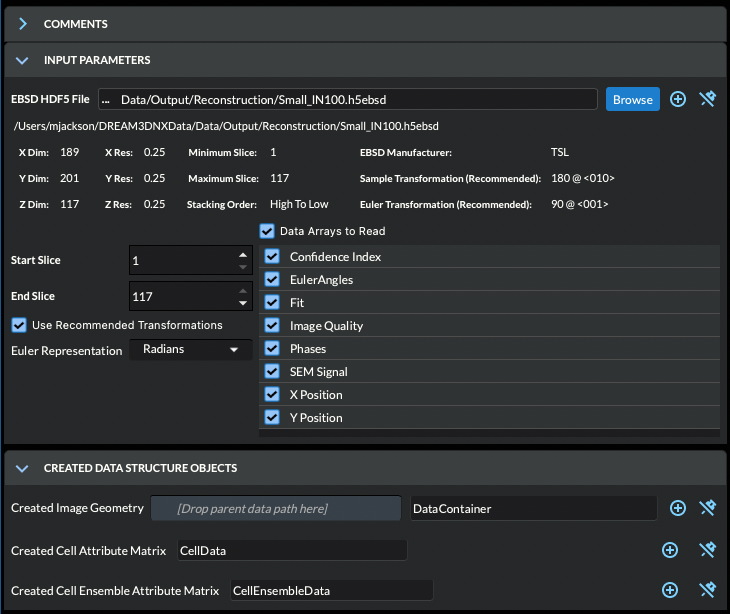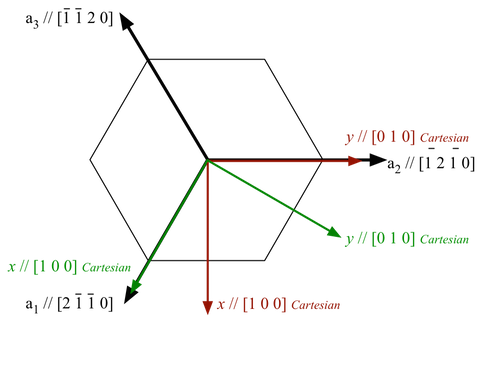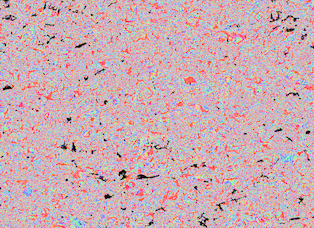11.41. Read H5EBSD File
Group (Subgroup)
IO (Input)
Description
This Filter reads from the .h5ebsd file that was generated with the Import Orientation File(s) to H5EBSD Filter.

The user can use the checkboxes under the Data Arrays to Read section to select which specific data arrays they are interested in importing.
The user can select a subset of the slices if they do not wish to import the entire volume.
The type of transformations that are recommended based on the manufacturer of the data are also listed with a checkbox that allows the user to toggle the recommended transformations on and off.
The user should select the Euler angle representation. (This is only available if the Use Recommended Transformations is turned on.)
Notes About Transformations
The user is solely responsible for knowing any sample reference frame transformations, crystal reference frame transformations and how the Euler angles are represented in the file. DREAM3D-NX provides historically correct transformations from a few of the EBSD manufacturers under the assumption that the EBSD instrument has been setup according to their guidelines. The user is strongly encouraged to discuss these topics with the person(s) who were responsible for collecting the data. For example the IPF images presented below were generated from an H5Ebsd file that was generated using a CTF file. The difference is that the Incorrect image did not correctly select the Angle Representation combo box on the filter’s user interface. The Euler angles were actually in degrees but were treated as if the values were in radians. The correct image is on the right.
If the user does not want the Read H5Ebsd filter to perform any transformations then the checkbox can be unchecked and the user can manually perform any desired transformations by inserting the appropriate filters into the pipeline. The suggested filters are:
An excellant reference for this is the following PDF file: http://pajarito.materials.cmu.edu/rollett/27750/L17-EBSD-analysis-31Mar16.pdf
Incorrect |
Correct |
|---|---|
|
|
Euler angles were treated as Radians |
Euler angles were converted from Degrees to Radians |
“Interstitial Free (IF) Steel courtesy of [1]” |
The Axis Alignment Issue for Hexagonal Symmetry [2]
The issue with hexagonal materials is the alignment of the Cartesian coordinate system used for calculations with the crystal coordinate system (the Bravais lattice).
In one convention (e.g. EDAX.TSL), the x-axis, i.e. [1,0,0], is aligned with the crystal a1 axis, i.e. the [2,-1,-1,0] direction. In this case, the y-axis is aligned with the [0,1,-1,0] direction. (Green Axis in Figure 1)
In the other convention, (e.g. Oxford Instr, Univ. Metz software), the x-axis, i.e. [1,0,0], is aligned with the crystal [1,0,-1,0] direction. In this case, the y-axis is aligned with the [-1,2,-1,0] direction. (Red Axis in Figure 1)
This is important because texture analysis can lead to an ambiguity as to the alignment of [2,-1,-1,0] versus [1,0,-1,0], with apparent 30 shifts in the data.
Caution: it appears that the axis alignment is a choice that must be made when installing TSL software so determination of which convention is in use must be made on a case-by-case basis. It is fixed to the y-convention in the HKL software.
The main clue that something is wrong in a conversion is that either the 2110 & 1010 pole figures are transposed, or that a peak in the inverse pole figure that should be present at 2110 has shifted over to 1010.
DREAM3D-NX uses the TSL/EDAX convention.
The result of this is that the filter will AUTOMATICALLY add 30 to phi2 when reading Oxford Instr (.ctf) files or .h5ebsd files denoted with the HKL manufacturer ID. There is no way to turn off this behavior.

Input Parameter(s)
Parameter Name |
Parameter Type |
Parameter Notes |
Description |
|---|---|---|---|
Import H5Ebsd File |
orientationanalysis.ReadH5EbsdFile |
Object that holds all relevant information to import data from the file. |
Output Image Geometry
Parameter Name |
Parameter Type |
Parameter Notes |
Description |
|---|---|---|---|
Image Geometry |
DataGroupCreation |
The path to the created Image Geometry |
Output Cell Attribute Matrix
Parameter Name |
Parameter Type |
Parameter Notes |
Description |
|---|---|---|---|
Cell Attribute Matrix |
DataObjectName |
The name of the cell data attribute matrix for the created Image Geometry |
Output Ensemble Attribute Matrix
Parameter Name |
Parameter Type |
Parameter Notes |
Description |
|---|---|---|---|
Ensemble Attribute Matrix |
DataObjectName |
The Attribute Matrix where the phase information is stored. |
Example Pipelines
02_Adaptive Alignment - Misorientation - Zero Shifts
(10) SmallIN100 Full Reconstruction
03_Adaptive Alignment - Mutual Information - SEM Images
04_Steiner Compact
(02) SmallIN100 Initial Visualization
(03) SmallIN100 Alignment
License & Copyright
Please see the description file distributed with this Plugin
References
[1] N. Allain-Bonasso, F. Wagner, S. Berbenni, D.P. Field, A study of the heterogeneity of plastic deformation in IF steel by EBSD, Materials Science and Engineering: A, Volume 548, 30 June 2012, Pages 56-63, ISSN 0921-5093, http://dx.doi.org/10.1016/j.msea.2012.03.068. (http://www.sciencedirect.com/science/article/pii/S0921509312004388)
[2] Rollett, A.D. Lecture Slides located at http://pajarito.materials.cmu.edu/rollett/27750/L17-EBSD-analysis-31Mar16.pdf
DREAM3D-NX Help
If you need help, need to file a bug report or want to request a new feature, please head over to the DREAM3DNX-Issues GitHub site where the community of DREAM3D-NX users can help answer your questions.

